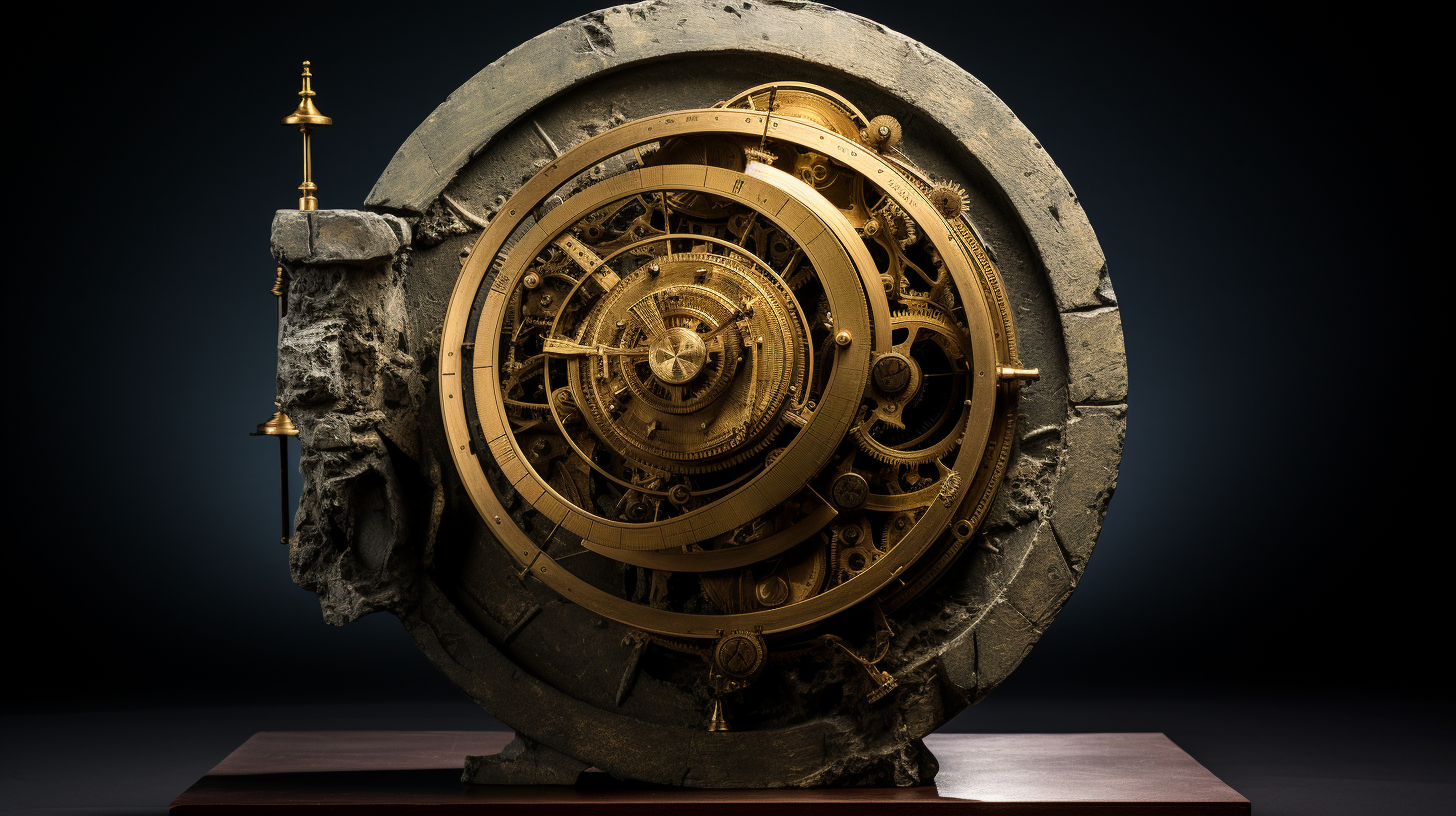Delving into the Abyss
In the realm of historical enigmas, few unearthings have intrigued minds like the Antikythera mechanism. Discovered by divers scouring the seabed near Antikythera, an island nestled amid the waters of Crete and the Greek mainland in 1900, this ancient artifact has puzzled scholars, historians, and even aficionados of science fiction for well over a century. Initially perceived as an ordinary corroded object, further exploration revealed a contraption of such complexity and sophistication that it defied our comprehension of ancient mechanisms. Could it be a time device from a distant future, as some conjecture? This piece will navigate the riveting narrative of the Antikythera mechanism and the discourse surrounding its true essence.
The Unveiling
The saga of the Antikythera mechanism commences with a crew of divers returning from a fishing voyage in 1900. Buffeted by a fierce tempest, their vessel drifted perilously close to the treacherous currents near Antikythera. Escaping catastrophe by a hair’s breadth, they resolved to take one final plunge to harvest sponges. Little did they anticipate unearthing a treasure more profound than any mere sea sponge.
It was diver Elias Stadiatus who first immersed into the depths. Emerging within minutes, he was visibly agitated, muttering about unearthly sights in the ocean’s abyss. Captain Demetrius Elcondos, a seasoned diver, decided to investigate further. Plunging beneath the waters, he resurfaced with a remarkable find—a bronze limb from a statue. What were initially perceived as submerged bodies turned out to be corroded statues from a sunken vessel, resting on the seabed for over two millennia.

The Antikythera Apparatus Unveiled
As the divers continued their expedition, they unearthed a plethora of artifacts: statues, ceramics, silver and bronze coins, and exquisite adornments. Among this trove lay an inconspicuous fragment of corroded metal, measuring approximately seven inches in width. Initially dismissed as insignificant, its true import would only come to light later. This unassuming piece earned the moniker of the Antikythera mechanism, christened after its site of discovery.
The Antikythera mechanism, upon closer examination, unveiled itself as more intricate than anticipated. Comprising three principal components and 82 distinct fragments, most adorned with elaborate gears, its purpose remained shrouded in ambiguity. Nonetheless, its advanced construction hinted at a degree of technological finesse seemingly implausible for its presumed era of origin—ancient Greece.
Deciphering the Enigmas
For years, scholars grappled with unraveling the mysteries of the Antikythera mechanism. How could such a sophisticated device exist in ancient Greece, and for what intent was it crafted? In 2013, a team at Cardiff University, spearheaded by astrophysicist Mike Edmonds and mathematician Tony Freath, embarked on a groundbreaking quest to unveil its secrets.
Their methodology involved meticulous surface scans and computed X-ray tomography, culminating in a detailed 3D rendering of the mechanism. Yet, the most striking revelation lay in the weathered inscriptions that adorned the facade of the contraption. Despite the challenges in interpretation, these inscribed characters amounted to an extensive array of ancient Greek letters, effectively metamorphosing the mechanism into a rudimentary user guide.
The guide substantiated that the Antikythera mechanism indeed functioned as an astronomical calculator, proficient in monitoring the celestial movements. However, this disclosure birthed more questions than solutions. How did ancient Greeks attain the knowledge and expertise requisite for crafting such an apparatus?
Temporal Transversal Hypothesis
The existence of the Antikythera mechanism poses a conundrum to conventional wisdom concerning ancient technologies. While numerous historians advocate for it as a testament to Greek expertise, adventurous minds float a radical notion—time travel. Could it be conceivable that the mechanism wasn’t birthed by ancient Greeks but rather plucked from the future into the past?
Author J.H. Brennan, in his treatise “Time Travel: A New Perspective,” delves into this concept. He purports that the mechanism’s unparalleled finesse in astronomy, mathematics, and mechanical engineering renders it an anomaly in ancient annals. If it indeed materialized from a future epoch, it stands as tangible proof of an advanced technologically adept civilization.
The Elusive Components
Skeptics deride the time travel conjecture as speculative and outlandish. Yet, advocates underscore the dearth of comparable devices or antecedents in ancient archives. Progressions in science and technology typically evolve gradually, leaving behind a trace of incremental advancements. However, the Antikythera mechanism stands solitary, bereft of precursors.
One particularly persuasive evidence is the inclusion of a differential gear—a technology not revived until the 18th century. This gear played a pivotal role in computing the angles between the Sun, the Moon, and lunar phases, a feat hitherto unimagined in ancient Greece.
Video Presentation:
Wrapping Up
While the Antikythera mechanism may not function as a literal time-travel device, its origins linger veiled in mystery. Whether borne out of ancient Greek ingenuity or as a relic from the future, it challenges our comprehension of history and technology. As researchers persist in decrypting its cryptic inscriptions and unfurling its missing parts, the Antikythera mechanism continues to enchant our minds, signifying that history conceals an array of mysteries awaiting disclosure.
